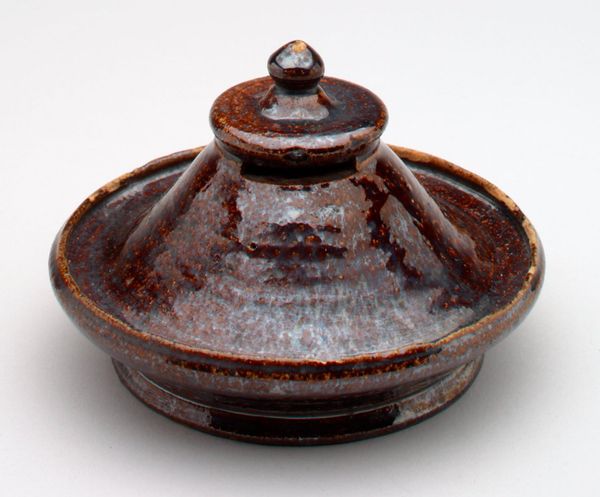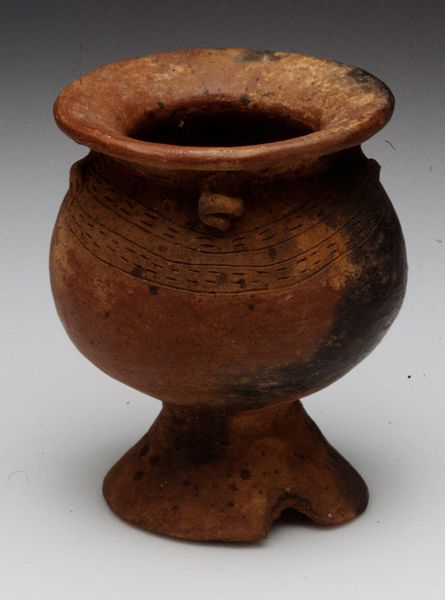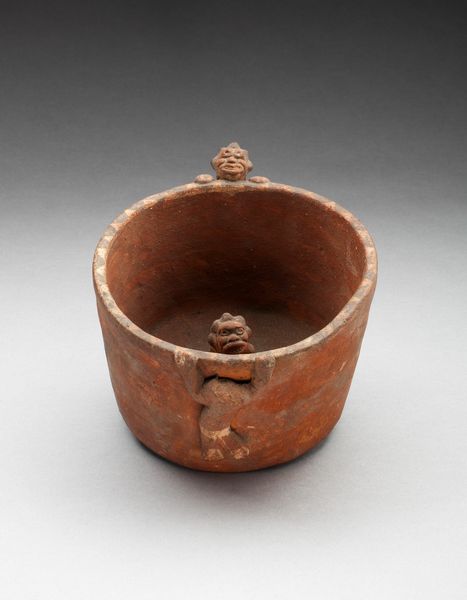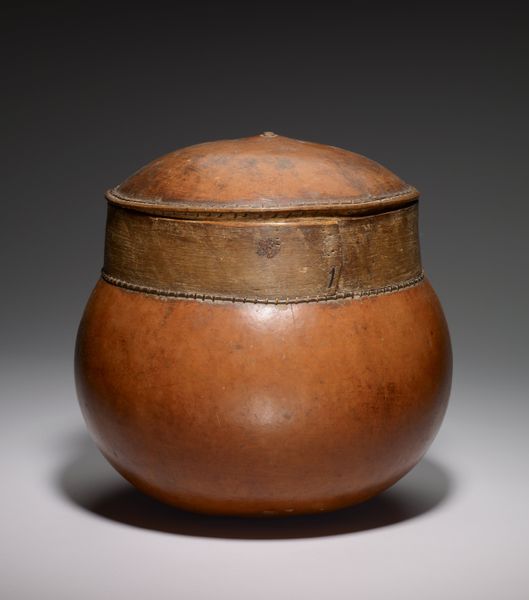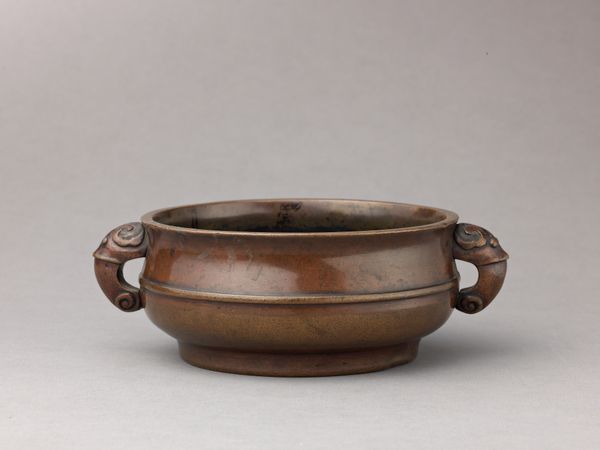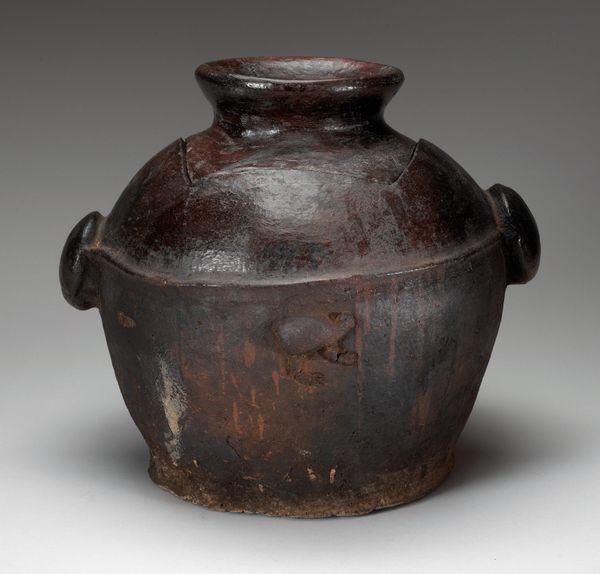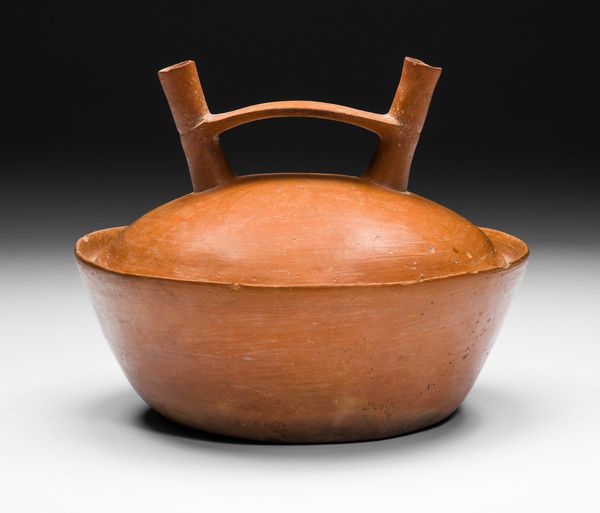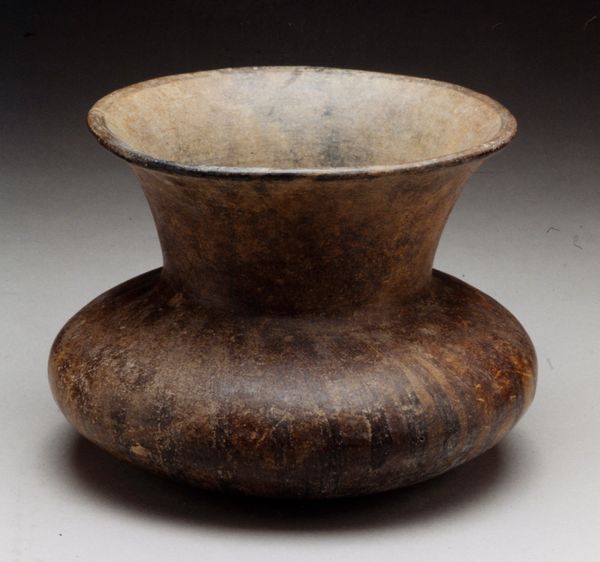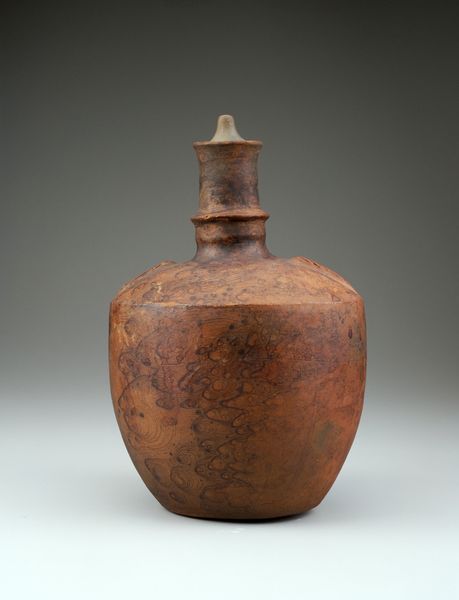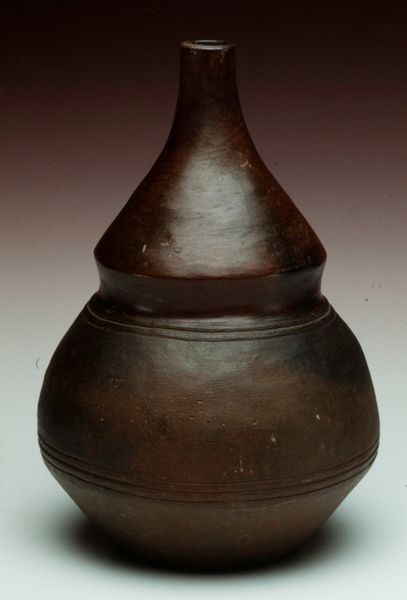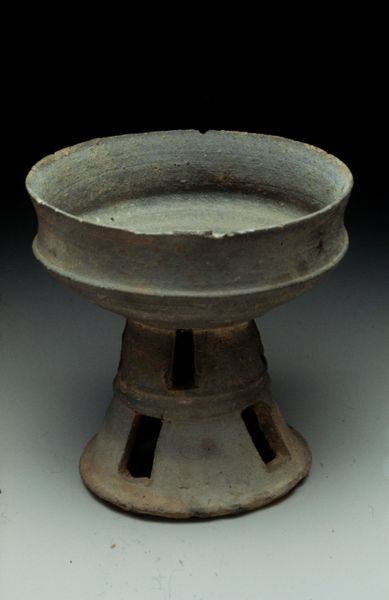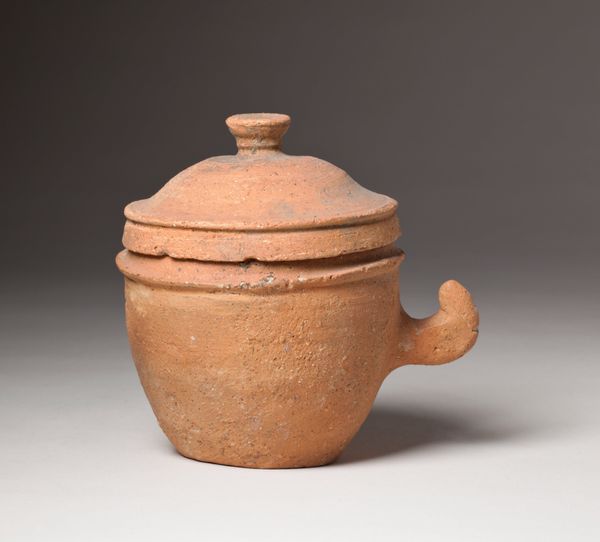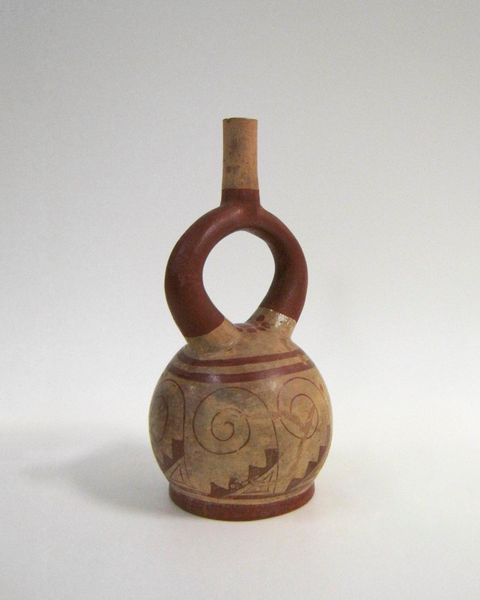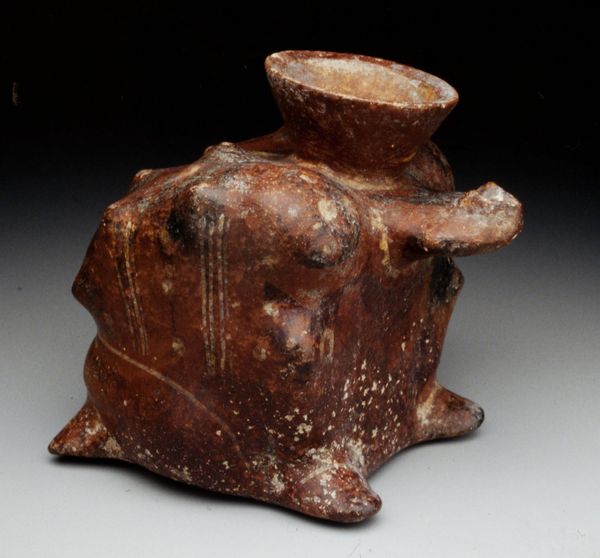
ceramic, earthenware
#
ceramic
#
earthenware
#
earthenware
#
indigenous-americas
Dimensions: 6 1/2 x 7 x 7 in. (16.5 x 17.8 x 17.8 cm)
Copyright: Public Domain
This double-spouted vase was crafted by the Paracas people, an Andean society that flourished in what is now Peru between approximately 800 BCE and 100 BCE. The vase is made of fired clay and adorned with a geometric design which alternates between darker and lighter shades of the same color. Its distinctive shape is a hallmark of Paracas pottery, reflecting both functional needs and symbolic expression. These vessels served as containers for liquids, and held profound cultural meaning within Paracas society. The double-spout and bridge handle are not merely utilitarian; they speak to the Paracas worldview, where duality and connection were central. Paracas art often reflects the importance of shamanistic practices, with ceramics like this vase serving as tools for ritual and transformation. The geometric patterns may have held symbolic significance, perhaps representing aspects of the natural world, or spiritual beliefs. As you observe this piece, consider how the Paracas people merged the practical and the sacred. This vase serves as a powerful reminder of the ingenuity and complex belief systems of this ancient culture.
Comments
No comments
Be the first to comment and join the conversation on the ultimate creative platform.
